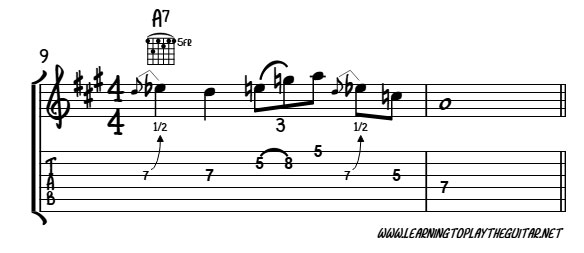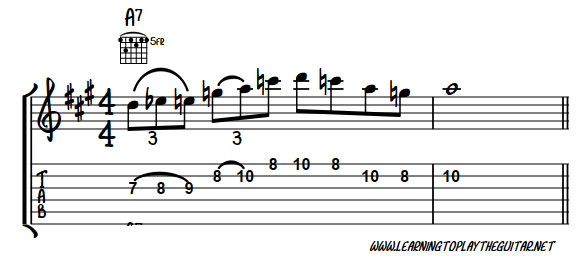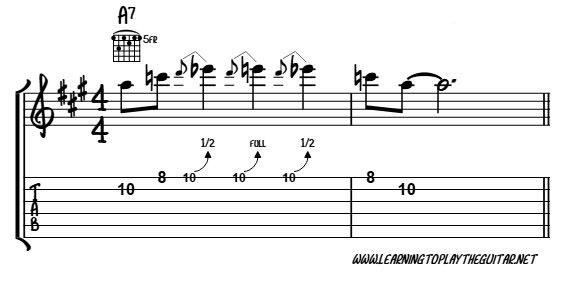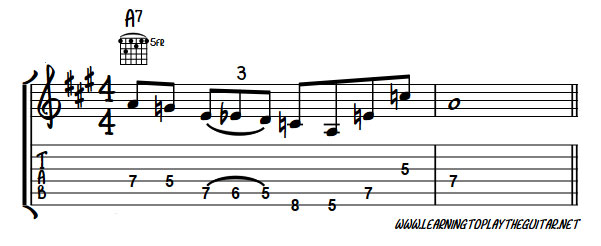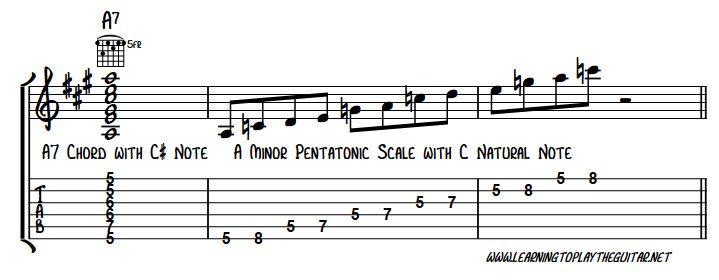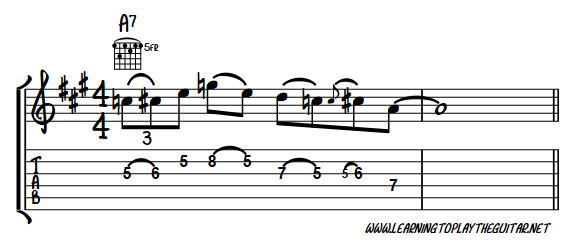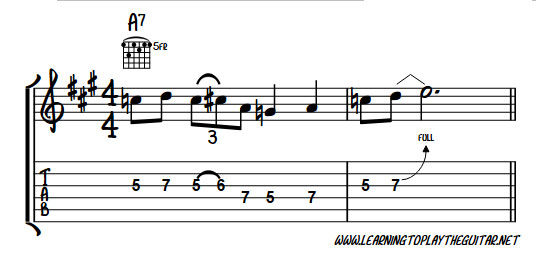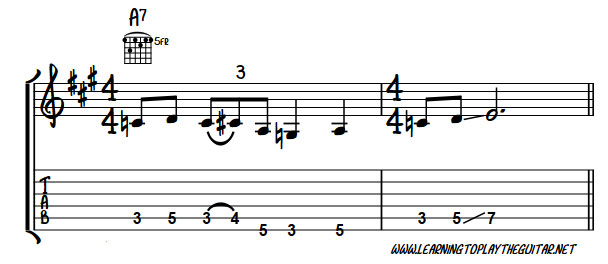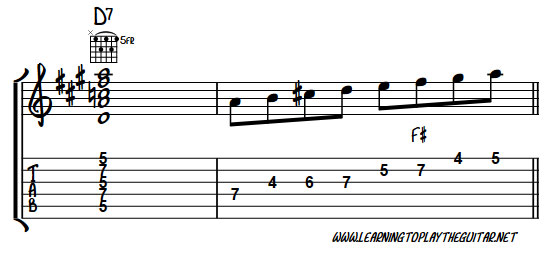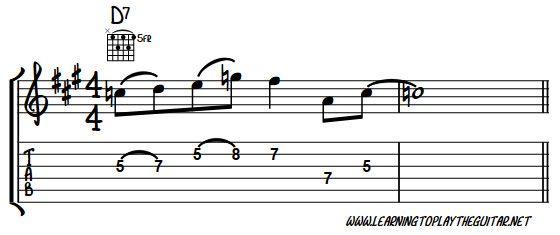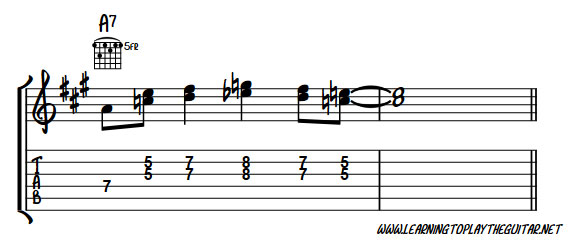Want to play better blues guitar solos? Move beyond the minor pentatonic scale with these 3 essential notes. These 3 extra notes will spice up your solos and make your licks sound fresh and interesting.
The Blues Note
The blues note is the flattened 5th in a scale. For example in the A minor pentatonic scale this is an Eb note. Adding this note to the minor pent scale (A C D E G = A minor pent) creates the Blues scale. (A C D Eb E G = A blues). The “blues” note is often bent into from a note ½ step below whether by bending a string on the guitar, or on a harmonica (blues harp) or with a singers voice.
The ½ bend is played from the 4th note (D in A blues). This means that the note effectively goes up one fret in pitch (D to Eb in A blues). The other commonly used bend is the full bend with the 4th note of the scale going up 2 frets in pitch. (D to an E note in A)
Listen to the audio of 1/2 Bend & Full Bend. |
Check out these licks using the blues scale that feature the blues (Flat 5) note.
| Blues Note Bends Lick 1 | Download Listen to the audio of Blues Note Bends Lick 1. |
| Blues Note Bends Lick 2 | Download Listen to the audio of Blues Note Bends Lick 2. |
The blues note can also be used as a passing note between the 4th (D) and 5th (E) notes. The following examples show other commonly used locations for the blues note in pattern 2 and down the octave on the 5th string.
| Blues Note Passing Lick 1 | Download Listen to the audio of Blues Note Passing Lick 1. |
| Blues Note Bends Lick 3 | Download Listen to the audio of Blues Note Bends Lick 3. |
| Blues Note Passing Lick 2 | Download Listen to the audio of Blues Note Passing Lick 2. |
The Major 3rd
Typical 12 bar blues guitar solos are played over dominant 7 chords which contain a major 3rd. This results in the minor 3rd in the minor pentatonic scale (C in A minor pentatonic) clashing with the major 3rd of the 1 (or root) chord (C# in the A7 chord).
This clash creates the edgy sound of the blues. The conflict between these 2 notes can be used to create some very cool licks. Check out the examples below.
| Major 3rd Lick 1 | Download Listen to the audio of Major 3rd Lick 1. |
| Major 3rd Lick 2 | Download Listen to the audio of Major 3rd Lick 2. |
Chuck Berry famously used this major 3rd note as the first note of Johnny B Goode and many of his licks and solos use this note.
| Johnny B Goode Lick | Download Listen to the audio of Johnny B Goode Lick. |
Like the blues note the major 3rd note can be used higher up in pattern 2 and down the octave on the 5th and 6th strings. Check out the examples below.
| Major 3rd Lick 3 | Download Listen to the audio of Major 3rd Lick 3. |
| Major 3rd Lick 4 | Download Listen to the audio of Major 3rd Lick 4. |
The Major 6th
The major 6th note in the scale is also the major 3rd chord tone of the IV chord in a 12 bar blues. For example in a 12 bar blues in A the IV chord is D7 with the 3rd note of this chord being F#. This F# is also 6 notes away in a scale from A making it the major 6th.
This note works best over the IV chord helping to emphasise the change to this chord and adds a jazzy element to your solos.
| Major 6th Lick | Download Listen to the audio of Major 6th Lick. |
It can also be used throughout a 12 bar blues without causing any major harmonic clashes. Check out this great chuck berry style double stop lick using the major 6th and blues notes.
| Major 6th Double Stop Lick | Download Listen to the audio of Major 6th Double Stop Lick. |
Next time you’re playing a 12 bar blues see if you can add these 3 essential notes to expand your blues solos beyond the minor pentatonic scale.



